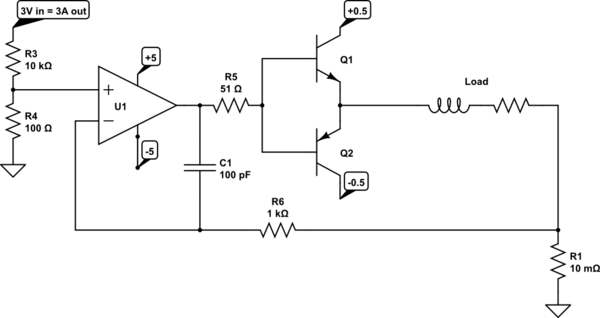I've been working on a model maglev train as my Grand Hobby Project; something around the H0 scale.
The initial idea was to use the Inductrack mechanism to keep it simple. To summarize, a Halbach array of rare earth magnets produces current in a conducting track, which in turn generates a repulsive force. Unfortunately the theory doesn't scale well downwards; either you have to go really fast (Mach 3) or need 3 cm of copper to drive the resistance down.
My current plan is to keep the array, but manage the currents in the track actively. Back-of-the-envelope calculations indicate I can get satisfactory lift with 2-3 amps, and I can even use PCB with 1 mm traces as the track without turning it into a hot plate.
However, that's still a respectable current where I come from, and the load is on the order of milliohms. I have no idea how to build a circuit that can drive those currents without blasting 99% of the energy in a sense resistor.
Other "requirements" are reproducibility and ease of setup. If I have to tweak a trimpot or solder 10 components for each trace in the track to get the forces to balance out, this thing will never get done. Optimal solution would be some off-the-shelf voltage-controlled IC.

